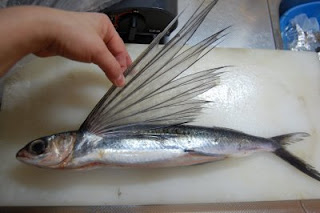Some of our personal favorites include ayu (salted and grilled), shitabirame(meuniere), shijimi (miso soup), benisake (salted and grilled), and for sashimi – surumeika, kinmedai, takabe, and isaki. Most of the seafood have links to photos.
Ainame 鮎並 fat greenling (Hexagrammos otakii)
Benisake べにさけ 紅鮭 sockeye salmon (Oncorhynchus nerka)
Hamo 鱧pike eel or pike conger (Muraenesox cinereus)
Kanpachi 間八amberjack or yellowtail (Seriola dumerili)
Maiwashi 真鰯 Japanese sardine (Sardinops melanostictus)
Mejimaguro めじまぐろ young tuna (genus Thunnus) if it is a young bluefin tuna it will be called honmeji, if it is a young yellowfin tuna it will be called kinmeji.
Shima aji 島鯵striped jack or white trevally (Pseudocaranx dentex)





